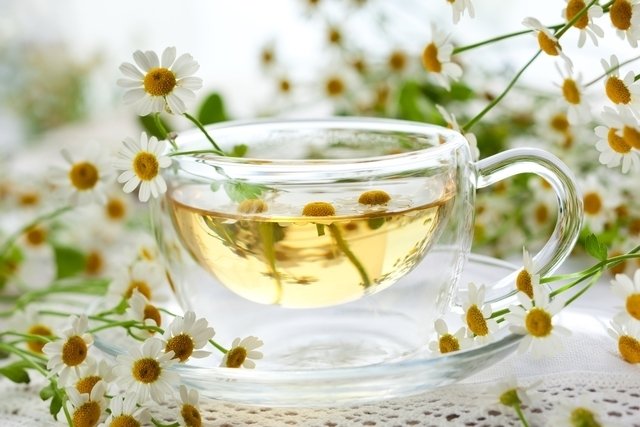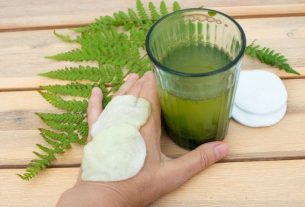Chamomile tea is a very popular home remedy around the world, being used to treat various health problems, from gastrointestinal disorders, such as poor digestion and colic, to psychological disorders, such as anxiety, irritability and nervousness, for example.
Chamomile tea has anti-inflammatory, antispasmodic, relaxing and antibiotic effects, making it an excellent option to help treat skin problems that cause inflammation, such as eczema, insect bites, burns and other types of redness.
Why Chamomile Works on the Skin
Chamomile flowers, which are used to prepare tea, are very rich in essential oils and other flavonoid compounds, such as apigenin or quercetin, which work together to offer a very anti-inflammatory, as well as antibacterial, action.
For this reason, chamomile is a good option for relieving redness on the skin, as well as disinfecting small wounds. As an option to tea, chamomile can also be used in the form of creams or ointments, which can be purchased in health food stores and even in some drugstores.
What is it for
Chamomile tea serves to relieve discomfort and redness of the skin caused by inflammation and, therefore, can be used in case of:
- Eczema;
- Dermatitis;
- Insect bites;
- Burns;
- Pimples;
- Folliculitis;
- Dry skin;
- Chickenpox;
- Allergy to pollen;
Additionally, chamomile tea has also been studied to complete the treatment of diaper dermatitis in babies, as it appears to soothe skin irritation while stimulating healing.
How to make chamomile tea for your skin
To use chamomile tea on the skin, it is important to make a stronger infusion, so that there is a greater concentration of active substances that can be absorbed by the skin.
To do this, you must follow the following recipe:
Ingredients:
- 1 cup /240 ml) of boiling water;
- 1 tablespoon of chamomile flowers.
Preparation mode:
Place the chamomile flowers in boiling water, cover and let it rest for 10 minutes. Then strain and let it cool. Finally, dip a gauze or cotton pad in the tea, squeeze out the excess and apply it to the skin.
To obtain a more calming effect, it is advisable to place the tea in the refrigerator before immersing the compress, as the cold temperature also helps to calm irritation.
Who shouldn’t use
Chamomile tea is not recommended for people allergic to chamomile or other plants from the same chamomile family, such as chrysanthemum, daisy, marigold or ragweed, for example.
Topical use of chamomile tea is only recommended for children over 12 years of age.
Tea with simple chamomile (Matricaria recutita) can be used during pregnancy and breastfeeding, as long as it is indicated by your doctor. Roman chamomile tea should be avoided, as there are still no studies that prove the safety of this type of chamomile during pregnancy and breastfeeding.
Bibliography
- THE LONGWOOD HERBAL TASK FORCE & THE CENTER FOR HOLISTIC PEDIATRIC EDUCATION AND RESEARCH. Chamomile (Matricaria recutita, Anthemis nobilis). Available at: <https://tratamientocelular.com/papers/cmran.pdf>. Accessed on April 18, 2019
- ZADEH, Jalal Bayati et al. Chamomile (Matricaria recutita) As a Valuable Medicinal Plant. International journal of Advanced Biological and Biomedical Research. Vol.2. 823-827, 2014

Sign up for our newsletter and stay up to date with exclusive news
that can transform your routine!
Warning: Undefined array key "title" in /home/storelat/public_html/wp-content/plugins/link-whisper-premium/templates/frontend/related-posts.php on line 12
Warning: Undefined array key "title_tag" in /home/storelat/public_html/wp-content/plugins/link-whisper-premium/templates/frontend/related-posts.php on line 13




